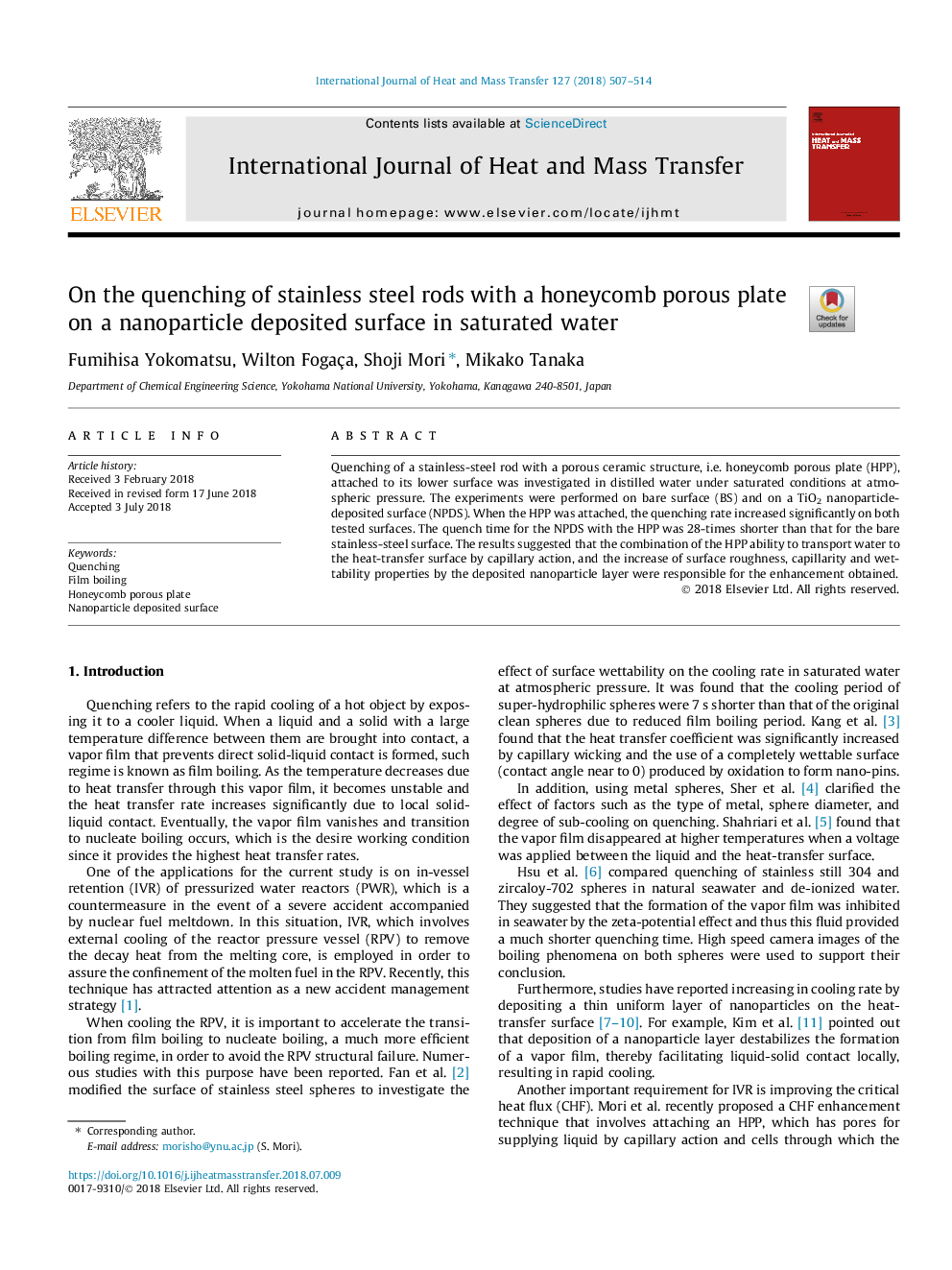| Article ID | Journal | Published Year | Pages | File Type |
|---|---|---|---|---|
| 7053795 | International Journal of Heat and Mass Transfer | 2018 | 8 Pages |
Abstract
Quenching of a stainless-steel rod with a porous ceramic structure, i.e. honeycomb porous plate (HPP), attached to its lower surface was investigated in distilled water under saturated conditions at atmospheric pressure. The experiments were performed on bare surface (BS) and on a TiO2 nanoparticle-deposited surface (NPDS). When the HPP was attached, the quenching rate increased significantly on both tested surfaces. The quench time for the NPDS with the HPP was 28-times shorter than that for the bare stainless-steel surface. The results suggested that the combination of the HPP ability to transport water to the heat-transfer surface by capillary action, and the increase of surface roughness, capillarity and wettability properties by the deposited nanoparticle layer were responsible for the enhancement obtained.
Keywords
Related Topics
Physical Sciences and Engineering
Chemical Engineering
Fluid Flow and Transfer Processes
Authors
Fumihisa Yokomatsu, Wilton Fogaça, Shoji Mori, Mikako Tanaka,
